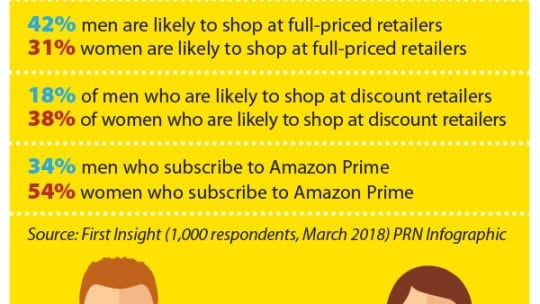
Several weeks ago we reported Statista’s survey of 10,000 U.S. adults 18-64 provided patterns in how the sexes made purchases ( PRN, March 6, 2018). Statista’s data said 81% of women made purchasing decisions on culinary items, while 65% of men did. 90% of women chose fashion-related goods, such as clothing, shoes and accessories, with men making decisions 75% of the time. Men led in consumer electronics purchases 79% to 69%. In cars, motorcycles and bicycles, men made decisions 64% of the time, women 50% of the time.
A caveat: 30% of those surveyed in Statista’s Global Consumer Survey were single. This means the results don’t reflect relationship dynamics, Statista says. In the end, the conclusion was that some of the figures made marketers’ jobs easier; other of the findings should have marketers thirsting for additional knowledge about customers.
Men vs Women on Mobile Devices
We feel that thirst and are responding with a new survey from retail researcher First Insight, which provides additional insight about how the genders differ on purchases. In short, these findings spot keen differences in shopping habits, insight no doubt useful to marketers and communicators.
The First Insight survey finds women are much better bargain hunters than men; women also are more likely to shop on mobile devices. The survey asked questions of 1,000 U.S. shoppers.
Only 22% of male respondents reported frequently shopping on mobile devices, compared to 40% of women. The next finding is hardly surprising given the previous one: 46% of men say they frequently shop on Amazon, while 60% of women do.
In addition, 42% of men are much more likely to shop at full-priced retailers than discount retailers (18%). Women (38%) prefer discount retailers over full-price shops (31%). Just 21% of men frequently use mobile devices to compare prices while in a store, yet 31% of women do. 54% of men say they research products and prices on Amazon.com before shopping elsewhere, while 67% of women do.

